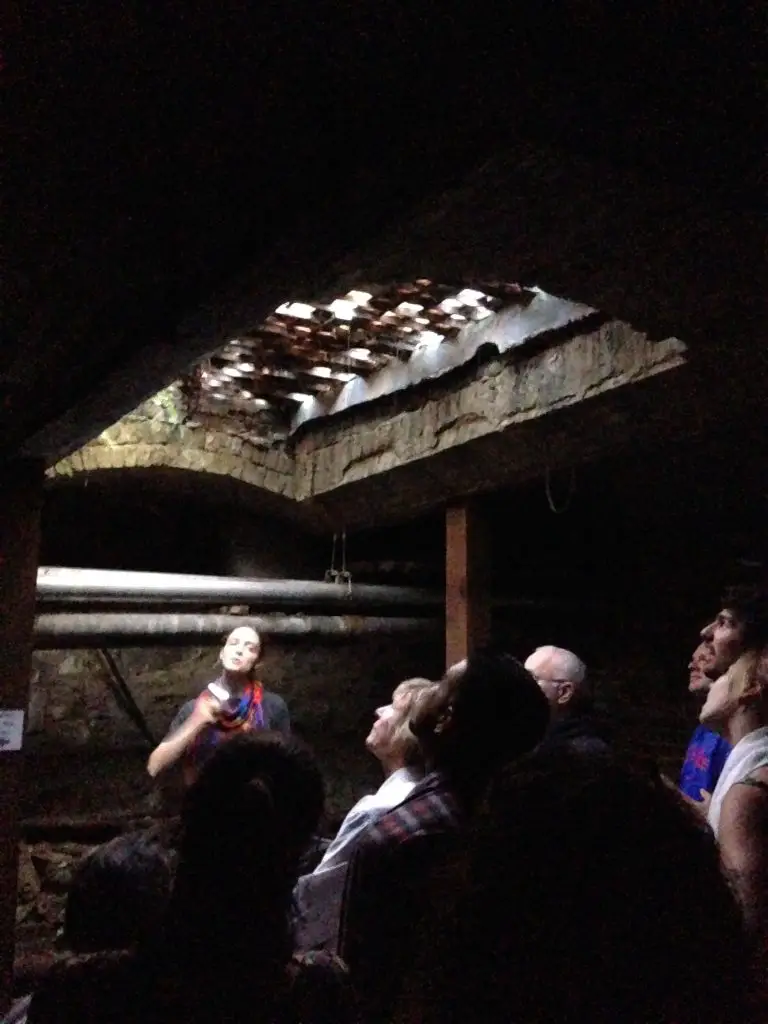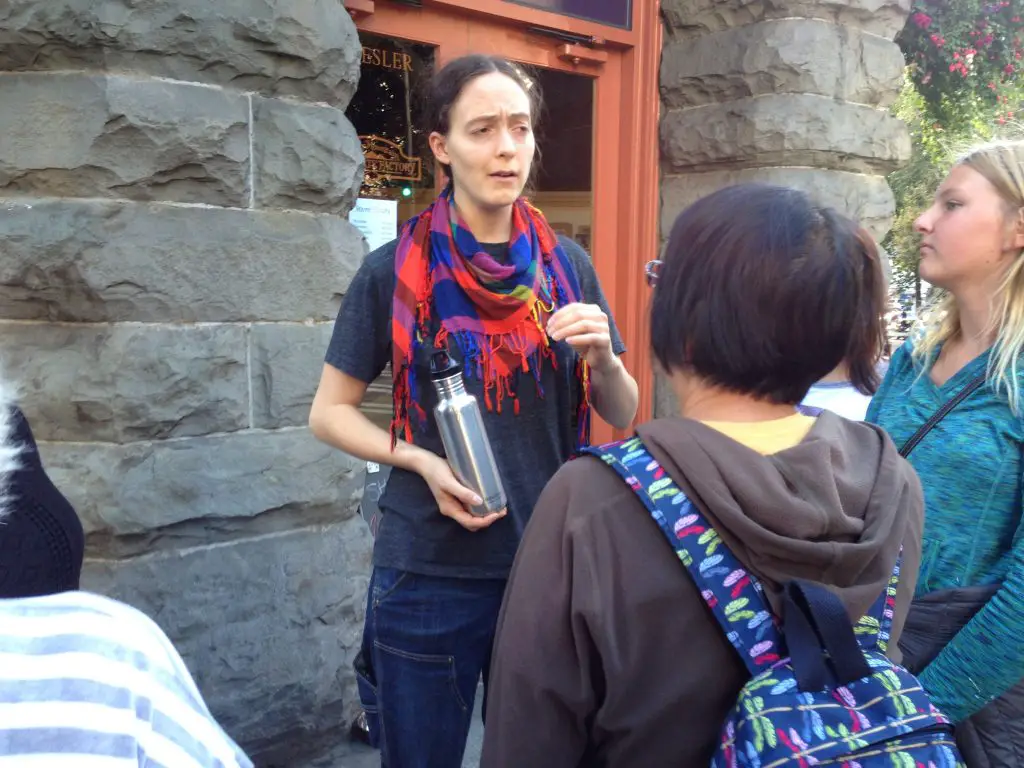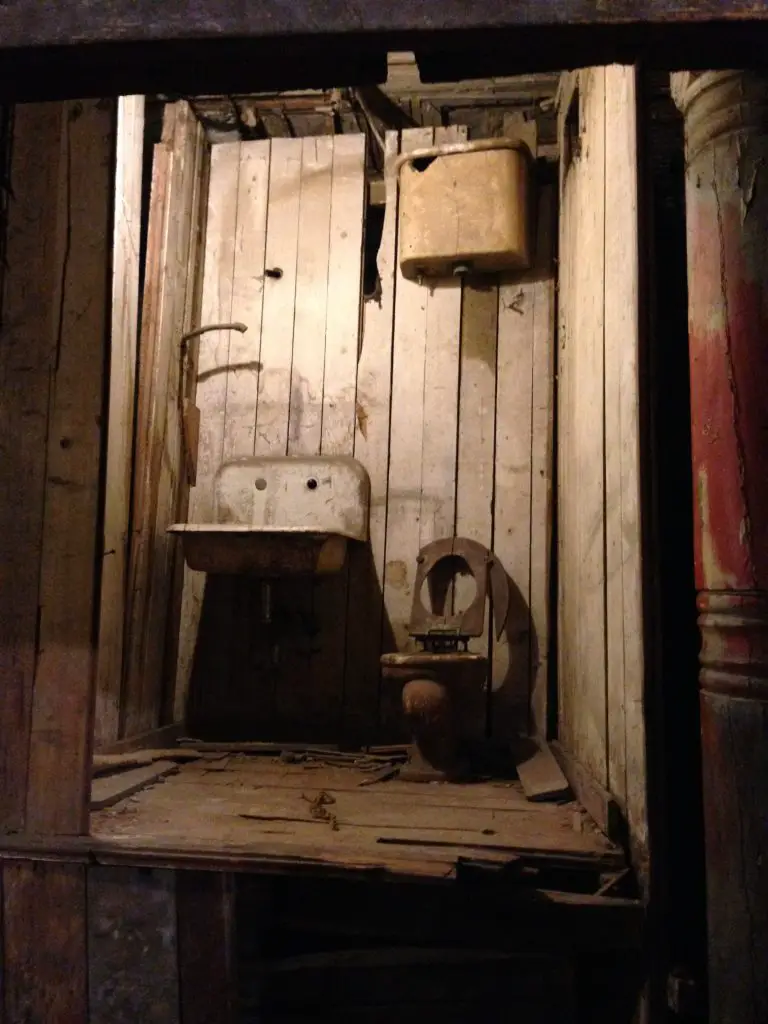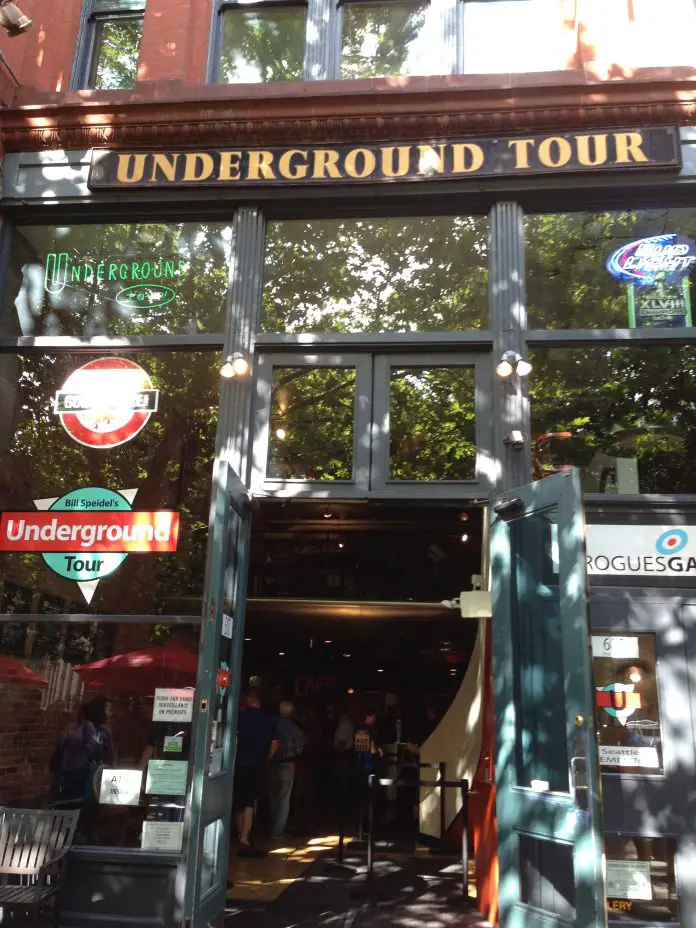Beneath the streets of Seattle lies an underground world – literally. I was lucky enough to experience these subterranean streets during my trip to the Emerald City in an Underground Tour of Seattle
Bill Speidel – Underground tour of Seattle
This was the founder of the Seattle Underground experience. He has a rich history but his passion for preserving the ‘original Seattle’ came about in the 1950s.
He is one of a group of visionaries who saved Pioneer Square by mounting a citizen campaign to convince the city to designate downtown’s oldest neighborhood an historic district, thus sparing from the wrecking ball the largest collection of Victorian-Romanesque buildings in the United States. The Underground Tour, which Speidel founded in 1965, is a by-product of that campaign.
Source: Bill Speidel’s Underground Tour
Why was Seattle ‘underground – a bit of History
The Great Fire Of London was in 1699, but did you know there was also a Great Fire Of Seattle?
Initially, Seattle had buildings made from wood. On June 6, 1889 John E. Back – a cabinetmaker – accidentally overturned and ignited a glue pot. He tried to put it out with water, but this spread the burning grease-based glue. The volunteer fire department made the mistake of trying to use too many hoses at once which resulted in a drop in water pressure and the Great Seattle Fire destroyed 31 blocks.
Rebuilding
Instead of rebuilding the city as it was before, the city leaders made two decisions:
1) All new buildings must be of stone or brick, as insurance against a similar disaster in the future;
2) To build the streets one to two stories higher than it was originally.
Pioneer Square had originally been built mostly on filled-in tidelands and as a consequence, it often flooded. The new street level also [made sure] that gravity-assisted flush toilets that funneled into the bay did not back up at high tide [ewwwww! Yes. Originally the toilets would, at high tide, wash back all the excrement that had been previously, er, ‘released.’ So you were possibly getting a double dose of the stuff. Nice town planning.]
Basically the streets were raised to 12 feet higher than before, in some places nearly 30 feet.
Streets and sidewalks
At first, pedestrians climbed ladders to go between street level and pavements in front of building entrances. Brick archways were constructed next to the road surface above the submerged sidewalks. Skylights with small panes of clear glass (which later became amethyst-coloured because of manganese in the glass) were installed, creating the area now called the Seattle Underground.

Buildings
When they reconstructed their buildings, merchants and landlords knew that the ground floor would eventually be underground and the next floor up would be the new ground floor, so there is very little decoration on the doors and windows of the original ground floor, but extensive decoration on the new ground floor.
Once the new sidewalks were complete, building owners moved their businesses to the new ground floor, although merchants carried on business in the lowest floors of buildings that survived the fire, and pedestrians continued to use the underground sidewalks lit by the glass prisms (still seen today on some streets) embedded in the sidewalk above.
Plague and speakeasies
In 1907 the city condemned the Underground because they feared bubonic plague, two years before the 1909 World Fair in Seattle. The basements were left to go to waste or used as storage. Some became illegal dosshouses for the homeless, gambling halls, speakeasies (a place to illegally buy alcohol during prohibition era) and opium dens.
Thanks to Bill Speidel, a small portion of the Seattle Underground has been restored and made safe and accessible to the public on guided tours.
Underground Tour of Seattle
Don’t think of this as a ‘boring tour about history’ – far from it! Our tour guide – Allie – led us on a very entertaining 75 minute adventure. You’ll not only be given the history, but regaled with some ghost stories too.

‘Seamstresses’
Yes, it appears Seattle is a town build on these industrious young women once their ‘profession’ was legalised (i.e.: the city could then collect taxes) – the city boomed! And this was years before women even got the vote – something wrong there: biggest financial contributors to the city, no vote allowed…hmm. If you haven’t guessed by now, ‘seamstresses’ is an euphemism for…
The tour takes you to three different sections of the Underground city, starting in Doc Maynard’s Public House (an 1890’s salon). As I said, it’s fascinating to hear the history of the various places in Seattle – and to hear of the conditions people once lived in (volcanic toilets anyone, as described above? Yuck!)

Note:
It’s best to book your Underground Tour in advance. Check their website here. Tours are usually on the hour, or every half hour from May to September.
**A special thanks to Bill Speidel’s Tours for hosting me during my stay in Seattle. As always, all thoughts and opinions remain my own, despite any complimentary services received.**


Hi Rebecca,
How incredibly cool. I never heard of the underground scene in Seattle. I mean, the literal underground scene 😉 So neat. It’s own little world underneath a major city. Volcanic toilets? Yikes indeed. I’ll pass. Although I recall an alleged toilet at a rest stop in central India that goaded me to use the infamous Outdoor Toilet our bus driver told us to use. When we asked him where that was, he said, “Anywhere.” Awesome share.
Ryan